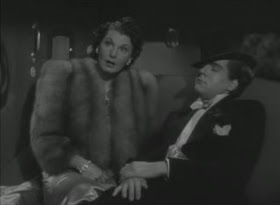I'm reading Robert Wagner's autobio Pieces of My Heart: A Life
" [When] I was seven years old... I began working at the Bel-Air Stables....
I was twelve years old when my future passed in front of me.... [One day in
1942, on a break from the stables,] I saw a foursome heading off the eleventh
tee....As they got closer, they came into focus, and I could see that the
foursome consisted of Cary Grant, Fred Astaire, Clark Gable and Randolph Scott.
I was...transfixed! It was the most amazing experience,not just because I had grown up seeing these men at the movies....It was because they looked... freshly minted!....I realized at that moment that I wanted to be in that club; looking back, I see that this was when I made up my mind to be in the movies --- to be an actor."
Robert Wagner's motivations seem somewhat similar to that of George Hamilton [another autobio I've recently read]. Though they are both hard workers, Wagner and Hamilton admit that the craft of acting was a means to a certain lifestyle, belonging to a particular group and maintaining the position.
So far, much of Wagner's book has been about his exploits with the ladies, including his four year relationship with the legendary Barbara Stanwyck. I had no idea.
Now I'm up to the part years later when he has just married Natalie Wood. It seems the two ladies wore the same perfume - Jungle Gardenia.
"I asked Natalie about it, and it turned out that more than ten years before we
were married, when Natalie was a child actress, she had made a movie with
Barbara called The Bride Wore Boots, and she had fallen in love with Barbara's
perfume. She decided when she was an adult she would use Jungle Gardenia as
well. Well, okay, but it was a bit disconcerting to me. However, I knew that
when Natalie made up her mind... she got her way, so I didn't try to get her to
change."
I wonder if he even told her about his discomfort?
I've also found out that Robert Wagner wanted the part of Martin Pawley in the great western (and my favorite John Wayne/ John Ford film) The Searchers. John Ford was adamantly against it because Jeff Hunter was already cast.
I'm trying to imagine Wagner as Marty. It might have worked. Marty is not carrying most of the film, John Wayne is doing that. Wagner wouldn't have had to worry about successfully shouldering the biggest burden [which I don't think he could have at this point in his career]. He probably would have been fine.
However, the story of this film might have been a bit overshadowed in subsequent decades by film fans (like me, for instance) who would focus on the fact that this was the first time that Wagner and Natalie Wood, who plays Debbie in The Searchers, would have worked together on film.
Haven't finished the book yet. It's interesting.























































